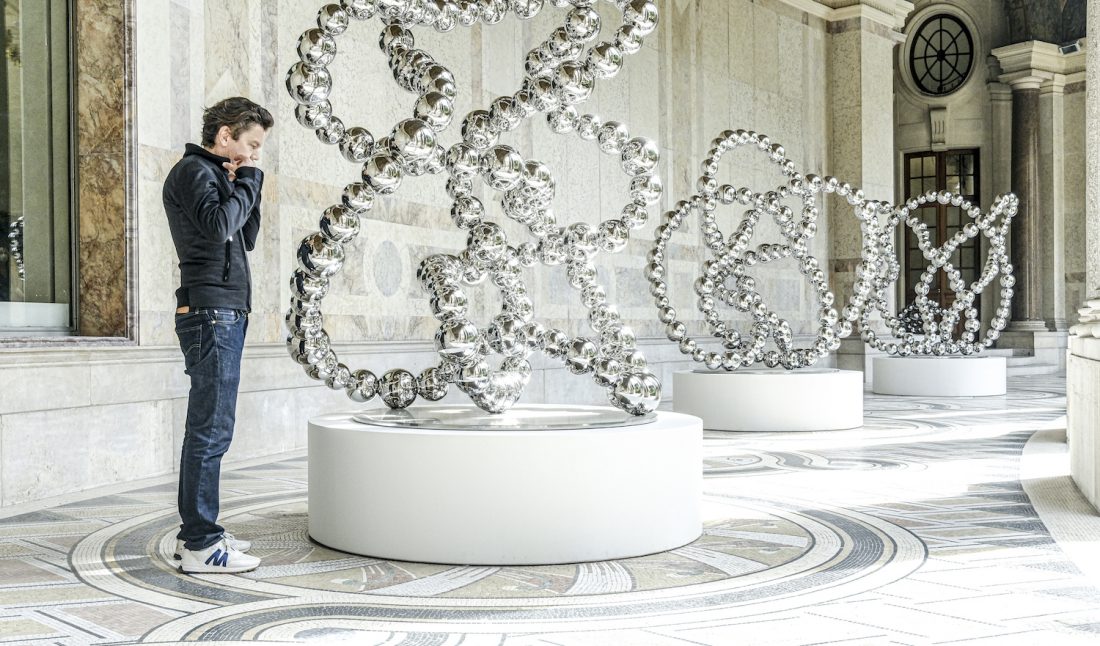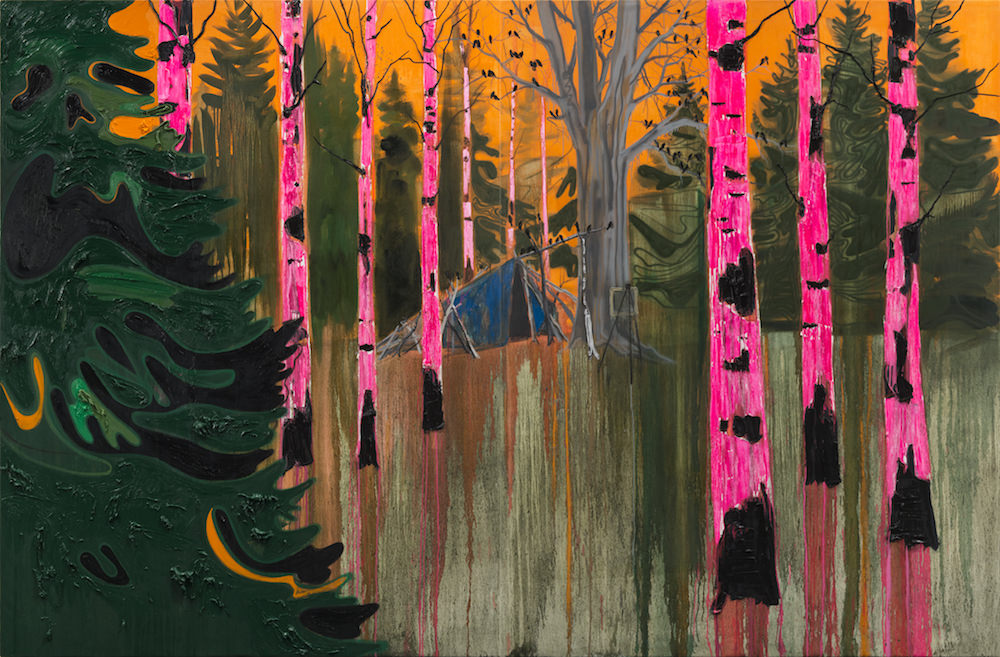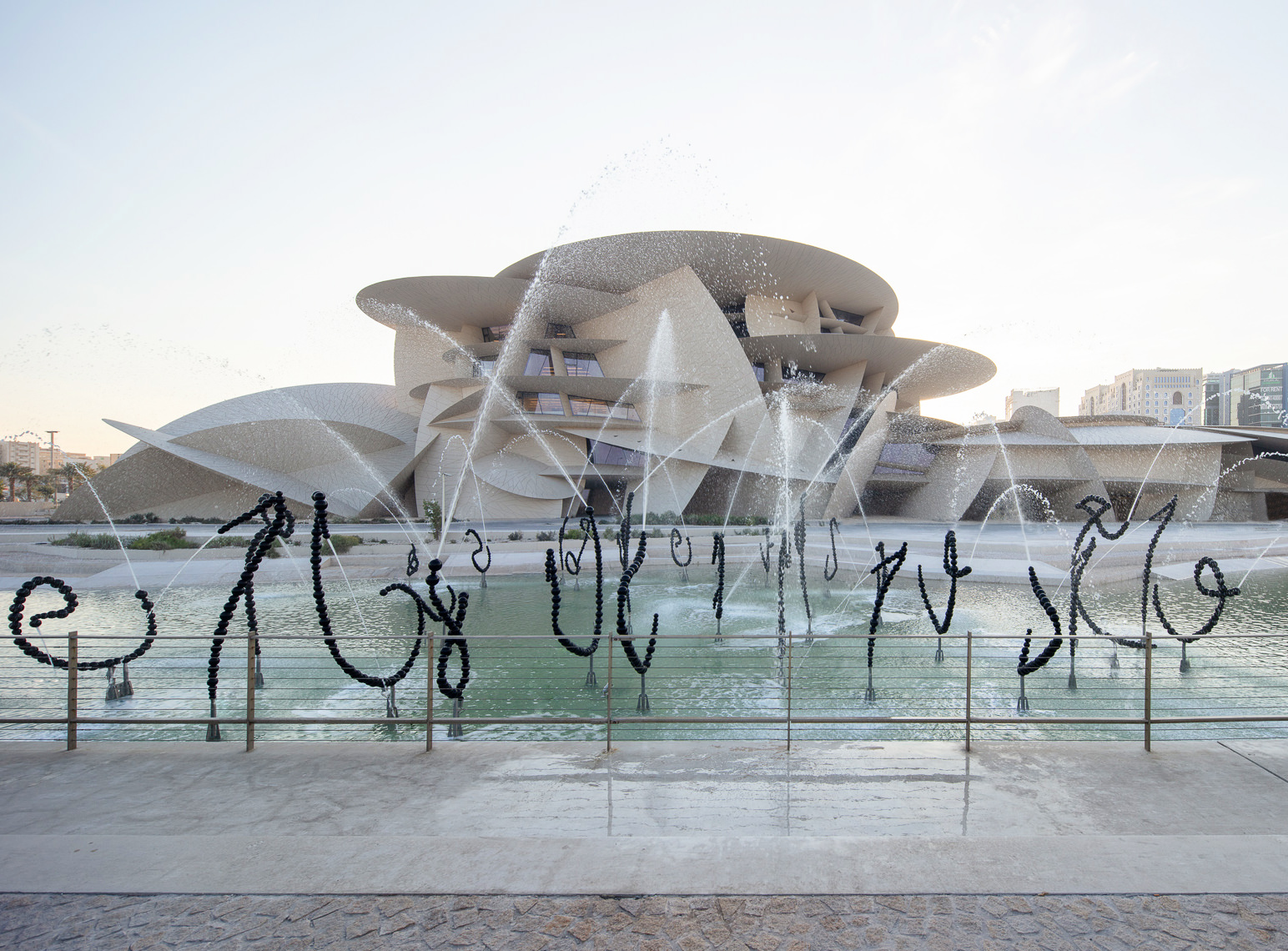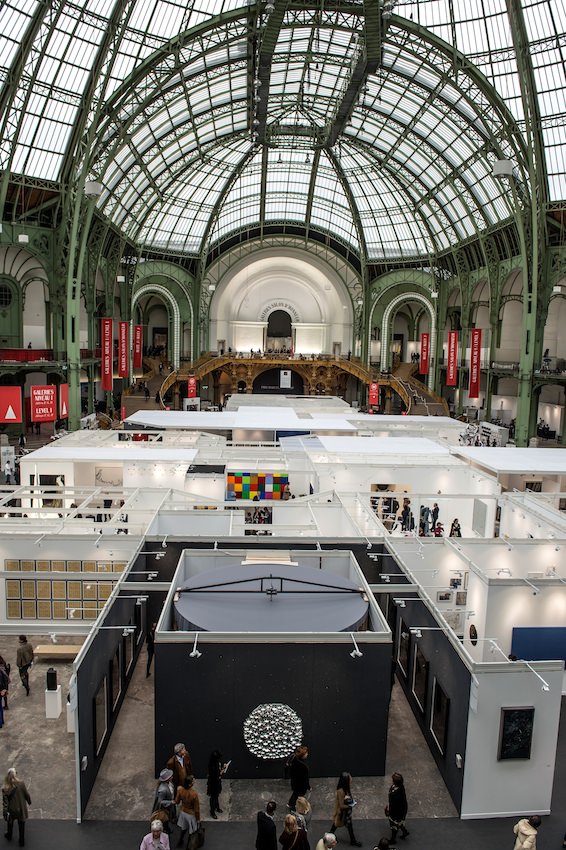The indoor galleries and outdoor gardens that make up the Petit Palais’s grounds are currently filled with enchanting installations by Jean-Michel Othoniel. On view through January 2, 2022, is “The Narcissus Theorem,” the French artist’s largest exhibition in Paris in 10 years. Through a jaw-dropping group of 74 new works and a handful of past pieces, Othoniel explores the theme of narcissism— its meaning and misunderstandings.
Centered on the idea of a man-flower reflecting the world around him, the show questions what it means to be a narcissist and act narcissistic, offering a new interpretation to a self-centered idea. Throughout the property are works that weave a web of illusion and imagination, guiding visitors through hidden gardens and open pathways full of sculptures that offer the occasion to dream. A blue river of mirrored Indian glass-blown bricks flows down the museum’s front steps, while wild knots and golden flowers sprout from lawns and hallways. Special for the presentation as well is the presence of The Crown of the Night, a colorful glass installation that now fills the dome of the museum’s northern staircase but was previously in a forest cathedral in Northern Europe for years.
Othoniel hopes visitors encountering a variety of these sculptures in the immersive, theatrical setting feel like they’re experiencing something intangible—imagined almost as an opera. Within this surreal environment, he asks, are we losing ourselves, or freeing ourselves? In Paris, Othoniel spoke with Whitewall about the significance of “The Narcissus Theorem,” the vital importance of public art, and how his work has evolved over the past decade.
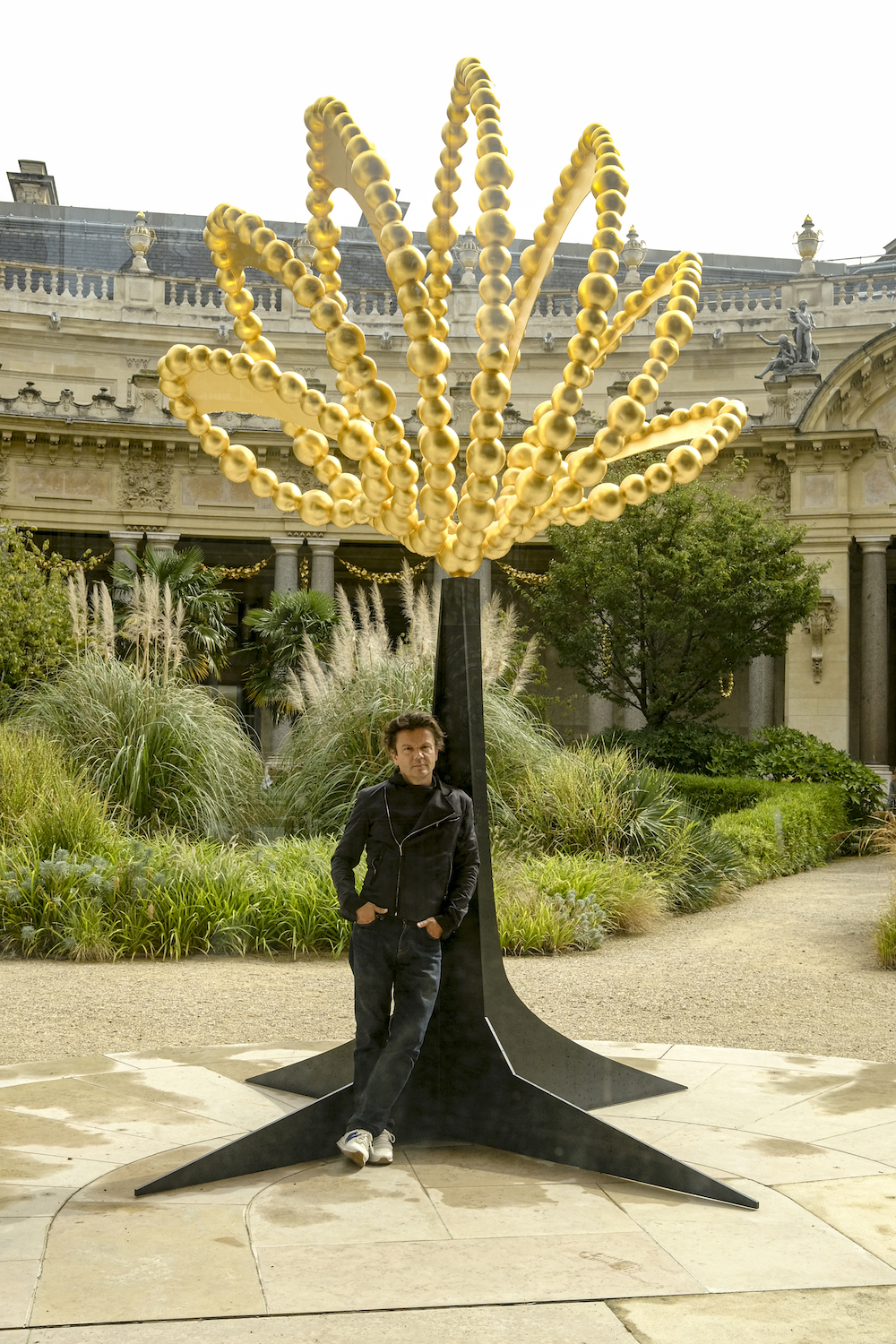 Jean-Michel Othoniel, Gold Lotus, 2015, portrait by Aurelien Cadoual.
Jean-Michel Othoniel, Gold Lotus, 2015, portrait by Aurelien Cadoual.
WHITEWALL: “The Narcissus Theorem” includes 74 new works. What can we expect from this offering?
JEAN-MICHEL OTHONIEL: After holding many exhibitions abroad in the last few years, it was important for me to present an entirely new artistic project in France in what I hope will be a spectacular setting. The exhibition, a true retrospective of the last 10 years, will demonstrate how my sculptures have come to represent a re-enchantment of our epoch by bringing a bit of poetry to an increasingly complicated world.
WW: The theme explores a man-flower who reflects himself, and therefore reflects the world around him. What shaped this introspective idea?
JMO: I wanted to stress my understanding of “Narcissus.” He is obviously attracted to his own image, but in doing so, he also discovers the reflection of the world around him. In the exhibition, the visitor will see himself in the works of art but also the fabulous architecture of the Petit Palais, which will surround him, as well as the gardens and his fellow visitors. I thus hope to re-create that first mirror stage when the child discovers his own image for the first time; that moment of pleasure where one is happy to share one’s joyous discovery with others.
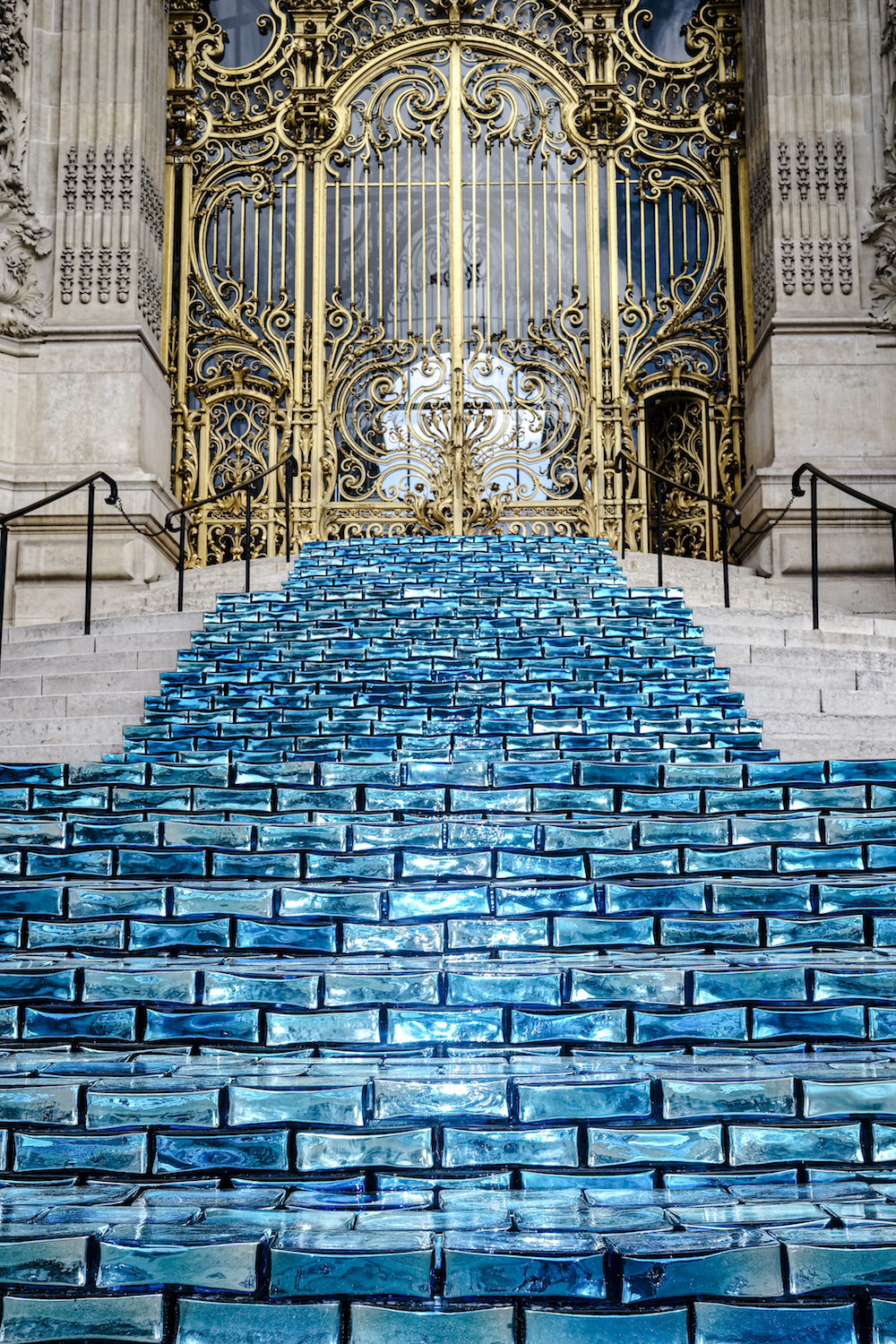 Jean-Michel Othoniel, Rivière bleue (Blue River), 2021, photo by Aurelien Cadoual
Jean-Michel Othoniel, Rivière bleue (Blue River), 2021, photo by Aurelien Cadoual
WW: Is there a key work that exemplifies this concept?
JMO: In an almost literal evocation of Narcissus, there will be golden lotus sculptures placed on the garden’s water basins; a large installation will set the scene with suspended sculptures above a parterre of blue bricks evoking a body of water, which is both calm and disturbing. This evocative space conveys best my ultimate message to the visitors. Will they lose themselves, or will they free themselves through this feeling of irreality? This is the key question at the core of the exhibition.
WW: The show further explores the meaning and misappropriation of narcissistic behavior, offering a new approach to a self-centered idea. Amid so much isolation in the past year, how do you think of yourself as an artist, and as a human being right now?
JMO: I don’t think I was ever so involved with the world than in the last year. Being isolated in the silence of a city for months heightened my understanding of others and made me seize the slightest sign in my environment. My creation focused on my first emotions. I rediscovered the masterpieces of Minimal art, which I adored as an adolescent and which I now wish to transmit to younger generations.
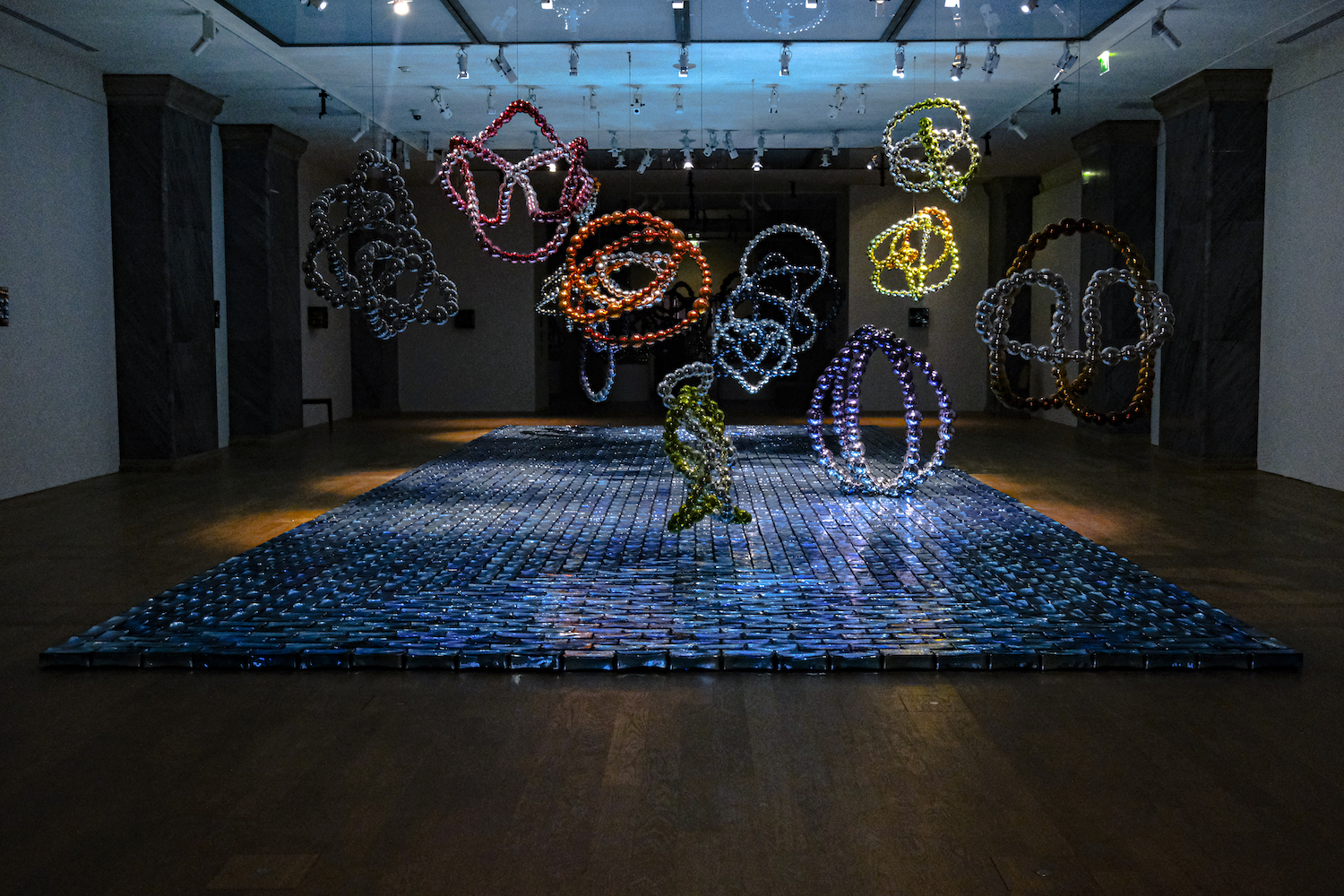 Jean-Michel Othoniel, La Grotte de Narcisse (The Grotto of Narcissus), 2021, photo by Aurelien Cadoual.
Jean-Michel Othoniel, La Grotte de Narcisse (The Grotto of Narcissus), 2021, photo by Aurelien Cadoual.
WW: This is your largest show in Paris in 10 years, since “My Way” at the Centre Pompidou. How do you feel your work has evolved since then?
JMO: In the last 10 years I chose to focus my work once again on a state of contemplation, where the most radical form of beauty can lead us to a cosmic understanding of beauty itself. I also engaged with other fields beyond the artistic realm. I built many works of art based on the mathematical theory of “savage” knots, thereby discovering quantum infinity.
WW: How did the past year amid the pandemic and other compounded crises impact the view of your work?
JMO: This period was very difficult at first, but rapidly evolved into a moment of intense refocusing. I was able to create a new, larger studio better suited to my new work and could regroup my different teams in one spot just outside Paris. As a result, I had the feeling that we were one big family working together in mutual assistance and with a greater osmosis.
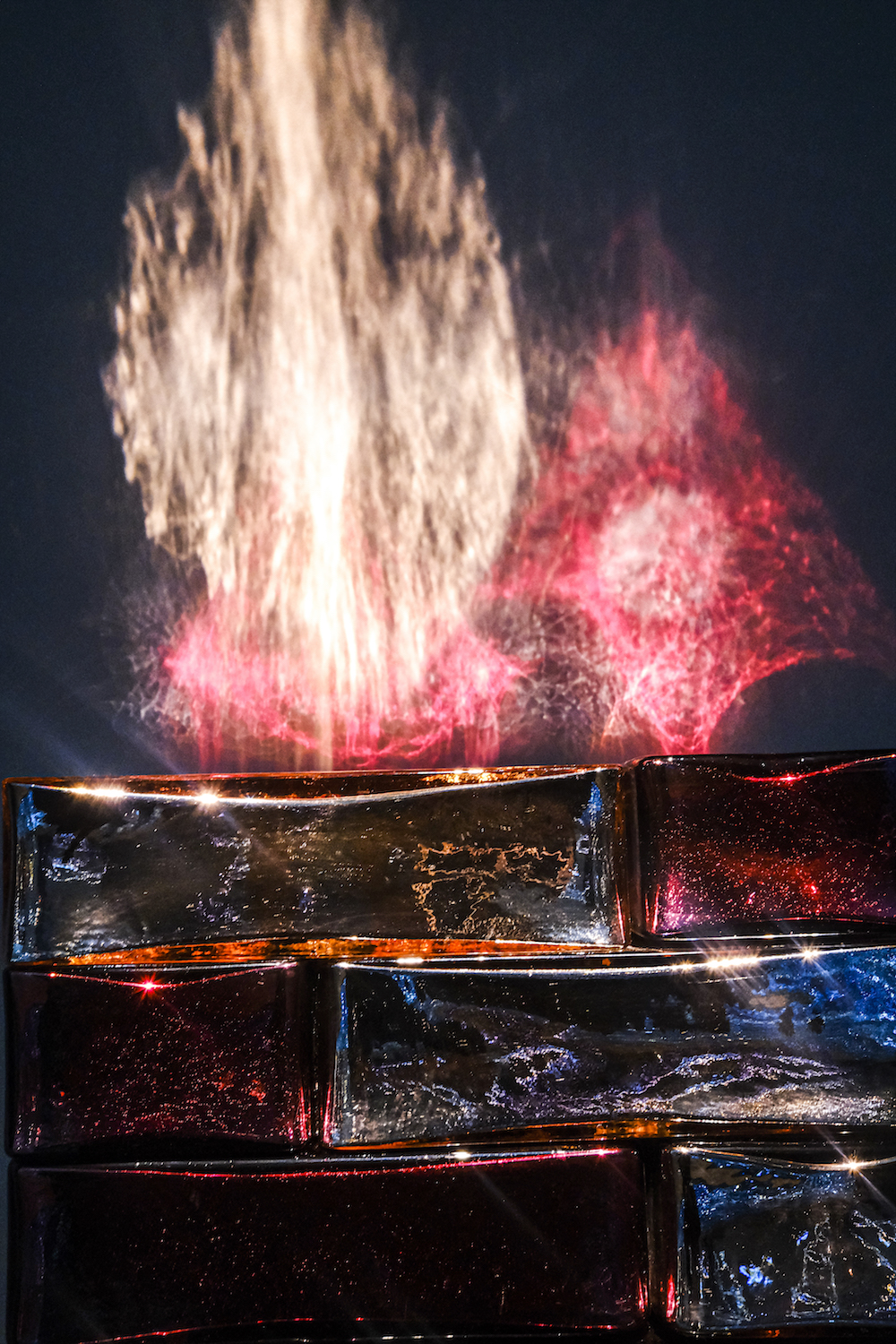 Jean-Michel Othoniel, Precious Stonewall (detail), 2021, photo by Aurelien Cadoual.
Jean-Michel Othoniel, Precious Stonewall (detail), 2021, photo by Aurelien Cadoual.
WW: Some of your pieces are woven into the landscape of the venue. How do these works create dialogue with the architecture of the Petit Palais itself?
JMO: I conceived the exhibition precisely with the Petit Palais in mind. First of all, there is the monumental installation, which unfolds along the sweeping staircase of the Palais and which will be visible to all—both night and day. The river of bricks of reflecting blue glass places the exhibition immediately within the realm of enchanted tales, and this is visible already from the street. This monumental work in tune with the building’s facade dialogues with Charles Girault’s golden gate created in 1900.
In the garden, which lies at the heart of the Petit Palais, a large mobile statue representing a golden lotus dialogues with similar sculptures placed on the basins. All the sculptures in the garden evoke the Garden of the Hesperides, the golden fruits of mythology. One can find hidden golden necklaces resembling golden apples in the trees, specifically made to the scale of the trees. These are Asian essences and have a very fragile structure.
WW: Your work, through scale and material, is both intimate and easy to relate to. How do you anticipate the viewer will respond to these works?
JMO: The exhibition indeed plays on the overlapping between measures of scale and spatial breaks. The works are to be discovered hidden in the garden’s leaves and in the museum’s three distinct levels of collections: Le Jardin (The Garden), the massive staircase with La Couronne de la Nuit (Crown of the Night), and on the ground floor, La Grotte de Narcise (The Grotto of Narcissus). The exhibition offers a promenade inside this unique building, which was built to stimulate dreams in 1900. A similar dream is brought back to life with this project.
I hope the public will be struck by the theatricality of the setting and by the exhibition’s narrative. This is why I called this installation “Le théorème de Narcisse” (“The Narcissus Theorem”). I hope the visitor will have the impression of experiencing an opera.
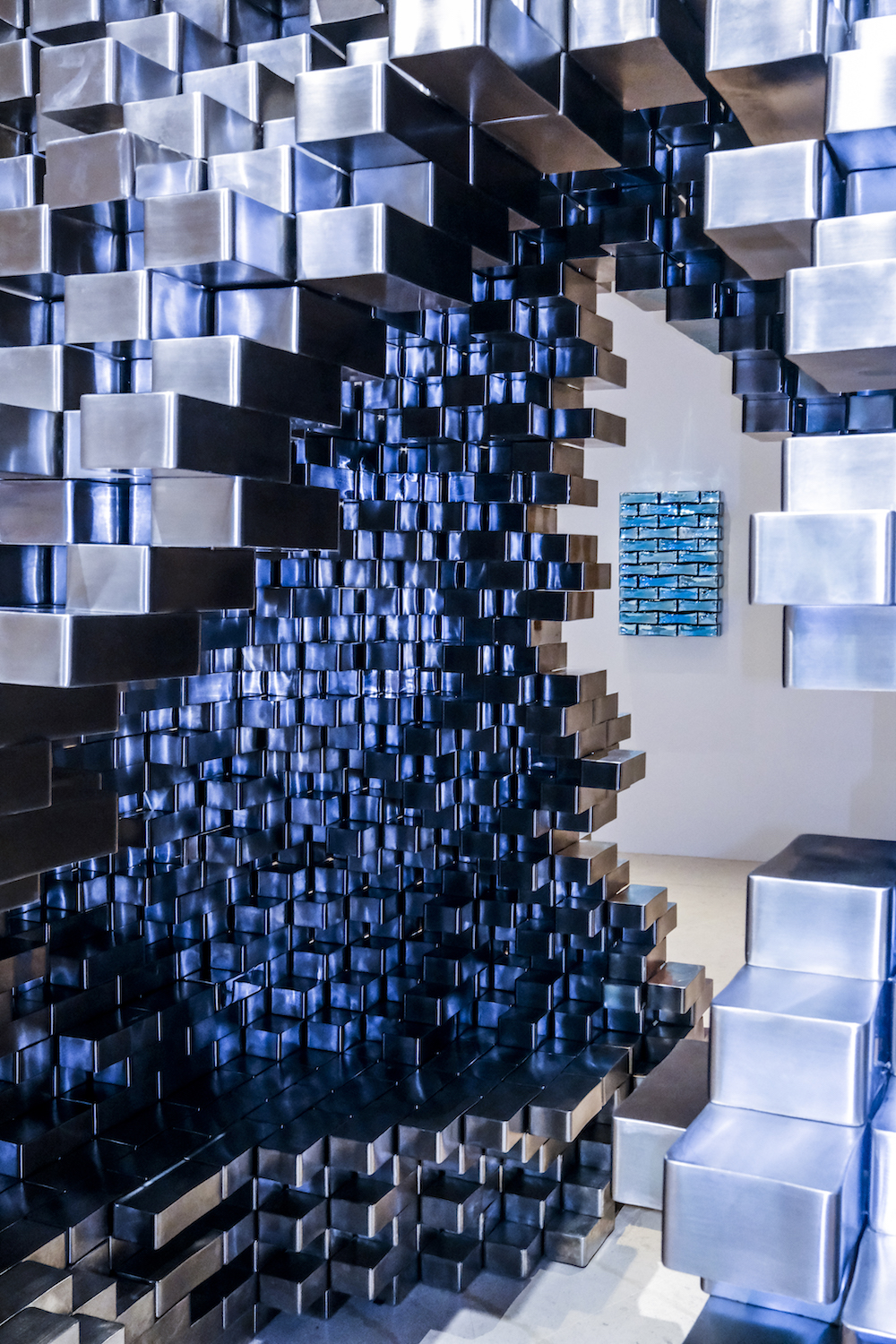 Jean-Michel Othoniel, Agora (detail), 2019, photo by Aurelien Cadoual.
Jean-Michel Othoniel, Agora (detail), 2019, photo by Aurelien Cadoual.
WW: The Petit Palais states that the exhibition provides an “occasion to dream” and “resist the disillusionment of the world.” How are you pursuing that today?
JMO: The heart of the exhibition is the garden with the metaphors it offers each of us. I have had a very long-standing passionate relationship with botany, flowers, and gardens. The universe of gardens in 1900 offered visitors who were unable to travel a feeling of exoticism and surprise but also of scientific discovery with the presentation of unknown and mysterious plants. In those years one built huge greenhouses to reconstitute jungle settings and to discover new species, both offering a dreamlike and enchanting world that could at times be also slightly disturbing.
I sought to re-create this element of surprise in my exhibition, to create a Garden of Eden, where one can draw both strength and inspiration in order to find one’s footing in today’s world. A place of contemplation and dreams from which we can emerge stronger in order to heal the real world around us.
WW: How has your work with blown glass evolved to take on new meaning in today’s complex and ever-changing world?
JMO: My first pieces were made of obsidian—a natural volcanic glass; I then shifted to transparent glass, and now I use reflecting glass. Glass has introduced an ever more sensual dimension in my work. I first focused on the notion of wounds—blown glass keeps the traces of the glassblower’s body. It has been kneaded, turned into a paste, and carried by his hand. If one “wounds” a ball of glass as it fuses, the wound’s imprint will remain forever. I have thus chosen to work on such accidents, obliging glassblowers to “wound” the glass before giving it its final shape with the result that it has irregular forms marked by scars. I find true beauty in such scars. My series “Colliers-Cicatrice” (“Scarred Necklaces”) was born out of this quest, and these necklaces were worn by those who participated in the Gay Pride of 1996. They were later suspended in trees or in the voids of different architectural settings.
Today my glass bricks, produced by Indian glassblowers starting in 2010, are a first step toward works which are ever closer to architecture, pointing to a desire to rebuild a world which is crumbling. I have created altars made of glass brick hanging from walls which I drew in accordance with meditative practices, echoing my life as a hermit during the months of lockdown. They include an obvious reference to the Minimalism of Donald Judd and Carl Andre, but these new works also evoke, by their very title, the Stonewall riots of 1969.
In the exhibition there are several glass brick works, either hanging from the wall or in the shape of an enormous pile which one can penetrate leading up to the La Rivière bleue (Blue River), a calm setting above which one can see around twenty glass sculptures, each offering multiple reflections. Since 2015 I have produced this series of works in collaboration with the mathematician [Aubin] Arroyo. All these new works reflect the visitor and each other all the way to infinity. Since the early 2000s, I sought to seize the idea of wonder, and this concept is even more important today: Poetry and politics are fusing. But in these most recent works, which are founded on scientific principles where the infinitely small and the infinitely large are twinned, I am conveying a far more cosmic vision of the world. I have become aware of our fragility.
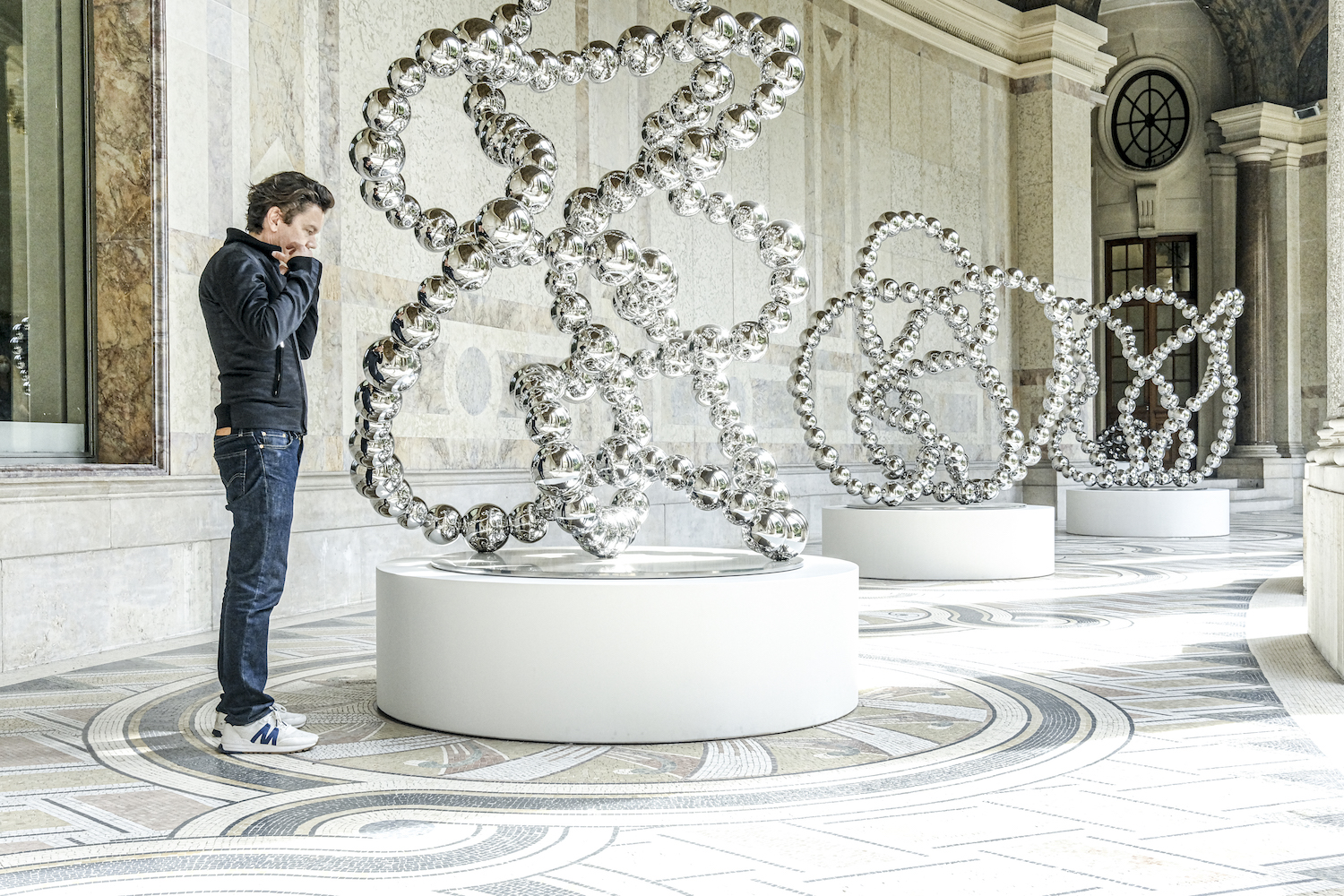 Jean-Michel Othoniel, Nœud miroir, 2021, portrait by Aurelien Cadoual.
Jean-Michel Othoniel, Nœud miroir, 2021, portrait by Aurelien Cadoual.
WW: Your work is vastly enjoyed in public settings. What in your opinion is the importance of public art?
JMO: Works of art in public spaces are ever more vital. I believe artists must go into the streets to offer their work to those who do not have the chance to go to museums or to art galleries. It is our social duty to offer for free, to the greatest number of people, the emotion that a work of art can produce. I try to do this as much as possible despite the sheer amount of time such a work of art entails in the city and also for different exhibitions.
WW: What are you working on next?
JMO: Precisely, on a monumental work in a public space. It has taken 10 years to be able to realize such a work in the shape of a 14-meter-high tower. It is placed on the banks of the Loire in front of the Castle of Amboise. I produced this architectural work at the request of the young winegrowers of the region. We actively collaborated on this project.
The Association of Vignerons had seen my Kiosque des noctambules (Kiosk of the Night Owls) at Place Colette in Paris and contacted me. It was a unique and brand new encounter for me, since it implied meeting and dialoguing with men and women engaging in the hard labor of the land, onto which one can add al the discovery of a landscape with its historic buildings. There is also a river and that very special light of Touraine. La Tour d’or blanc (The Tower of White Gold) is inspired by the region and its wine, and it will be inaugurated in early October with a big party with the “locals,” where we will all drink together wine that has golden hues.







